Midterm practical --> LBP & Hip treatments
1/23
There's no tags or description
Looks like no tags are added yet.
Name | Mastery | Learn | Test | Matching | Spaced |
|---|
No study sessions yet.
24 Terms
What are some ways to modulate symptoms?
directional preference, manual therapy, modalities, traction, active rest
When are specific exercises warranted for LBP?
discogenic symptoms or pain that radiates into the leg
Which directional preference is most common?
extension preference
If you determine an extension preference, where should you start with the patient?
have the patient stretch into extension with low intensity high frequency (10-15 reps, 4-6 times per day)
What is the progression for home-based extension exercises?
prone on pillows, prone without pillows, prone lying, prone on elbows, prone press ups, extension in standing
What are some flexion based interventions for flexion directional preference?
flexion in lying/repeated (knee to chest), flexion in sitting/repeated, flexion in standing/repeated
What must you correct before addressing sagittal plane back movement?
lateral shift
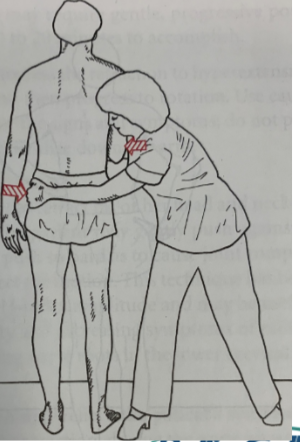
Describe how to perform a therapist correction of lateral shift
• Have the patient stand with feet shoulder
width’s apart.
• Therapist stands on the side of shift (right shift,
stand on the right side)
• Place your shoulder against the patient’s elbow
• Wrap your arms around the patient’s pelvis on
the opposite side and simultaneously pull the
pelvis toward you while blocking the patient’s
trunk from moving
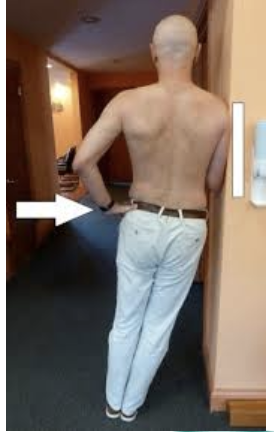
Describe how a patient can correct their lateral shift at home
Patient stands with the side that the shift is occurring
against the wall
The opposite hand is place on the ipsilateral hip (left hand
on left hip)
The patient then gently leans in or drops the hips of the
involved side towards the wall, holds for a few seconds and
returns to the starting position
What type of patients will benefit from traction?
leg pain, signs of nerve compression, peripheralization with CSLR or extension
What is the recommended approach for LBP due to lumbar stenosis?
Specific Exercise:
o Centralize symptoms with repeated
flexion exercises
o Rotational exercises in side-lying
Restore Upright Posture:
o Increase thoracic/lumbar extension
o Increase Hip extension
Encourage grading and paced exposure to exercise
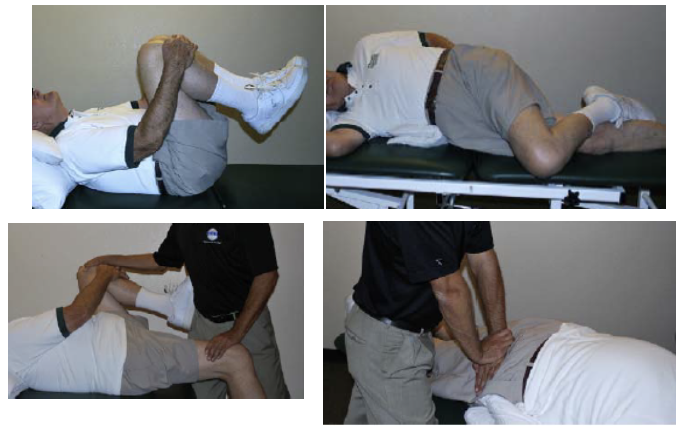
When is manual therapy absolutely contraindicated (particularly thrust)?
malignancy, RA, spondylolisthesis, pregnancy, fusions,psychogenic disorder
When does manual therapy require special care/attention?
acute inflammatory conditions, significant segmental stiffness, systemic diseases, irritability, osteoporosis, long term corticosteroid use
What is the first step in calming the nervous system for neurogenic pain?
education about what nerves need (movement, space, blood flow)
Next to education, what is the next step for addressing neurogenic pain?
treat the neural container (structures around the nerve) or treatment of the nerve itself (sliders/gliders, tensioners)
What are active approaches of treating the container?
Lumbar contralateral side bending (movement
away from the painful leg) repeated motion
o Lumbar side glides
o Slump stretching
What are some passive approaches of treated the container?
o CPA and/or UPA joint mobilizations
o Manipulation
o Manual traction
o Soft tissue mobilization
Describe lumbar gapping mobilization
Position: the patient is side lying, with the
symptomatic leg on top, and lying on a rolled-up
towel to increase contralateral side bending.
o Starting position of patient’s lower
extremities is in the fully extended position.
• Next, the therapist performs graded mobilizations
into contralateral side bending.
• As symptoms modulate, the patient is actively
involved by extending the knee, then dorsiflexing
the ankle, then cervical spine flexion.

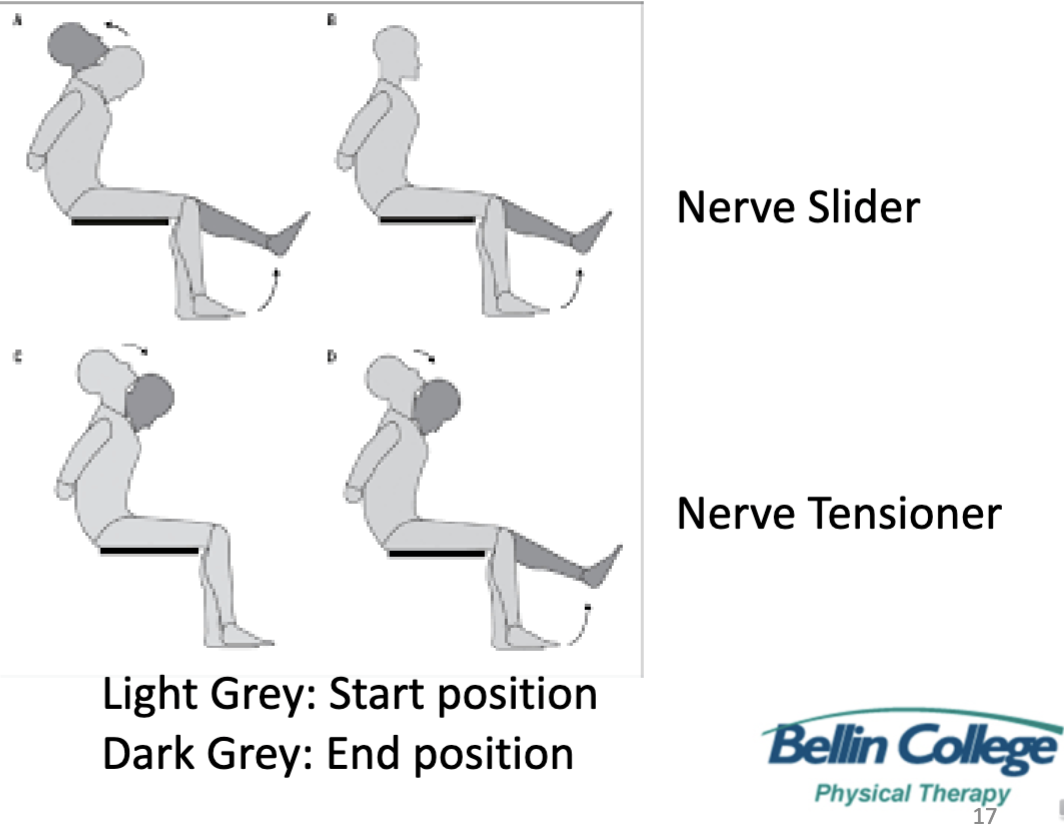
Describe how to perform a nerve slider
patient is seated in a chair with arms behind their back in relaxed posture
ask patient to tuck in their chin
have the patient lift the leg of their affected side
for additional wind up, have the patient extend their neck
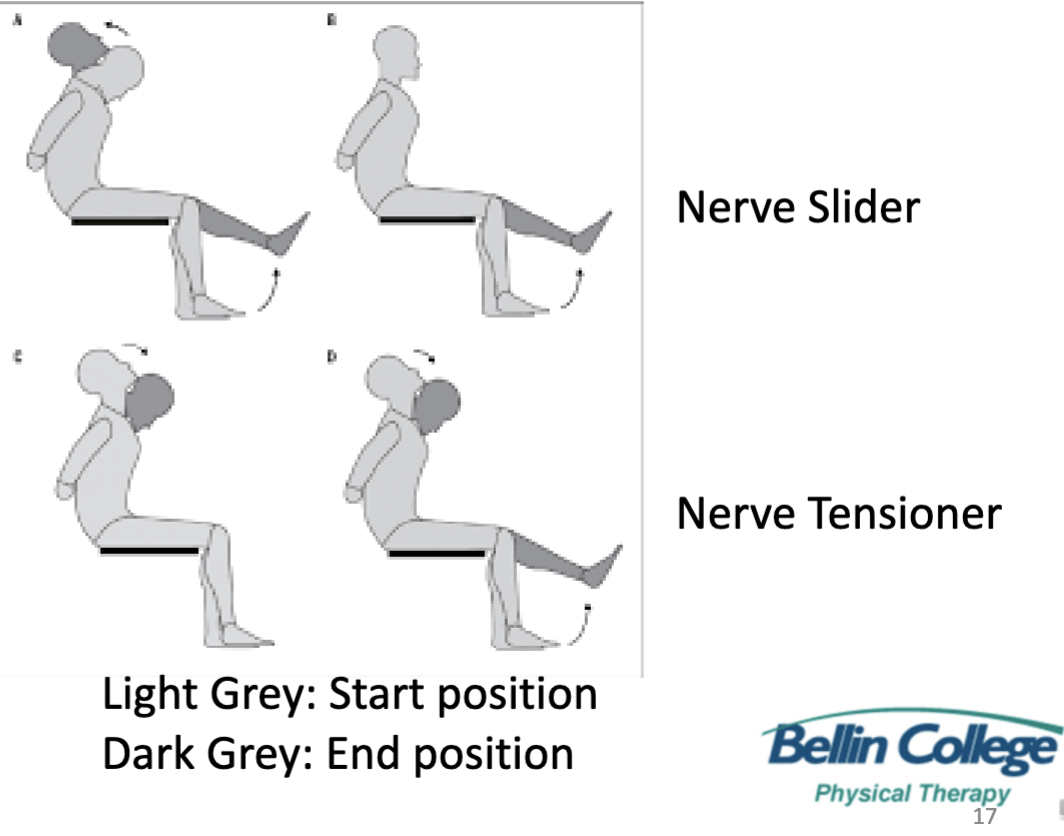
Describe how to perform a nerve tensioner
patient is seated in a chair with their arms behind their back
ask patient to extend their neck back
have patient lift up their affected side leg
for additional wind up, have the patient tuck in their chin

Describe how to perform a lumbar sidelying manipulation
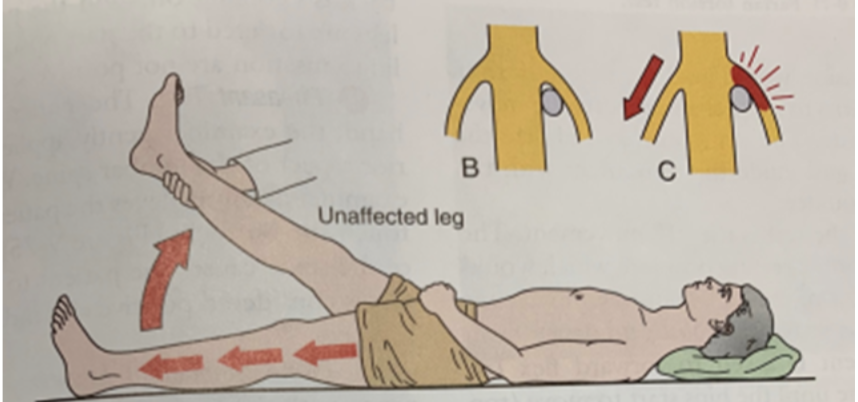
Describe how to perform a crossed straight leg raise
• Unaffected leg is raised, the nerve roots on
the opposite side slide DOWN and to the
midline.
• If a disc herniation is present, there will be
increased tension on the affected legs nerve
root resulting in radicular symptoms of the
affected leg (remaining on the table)
• Positive test virtually RULES IN a disc
herniation
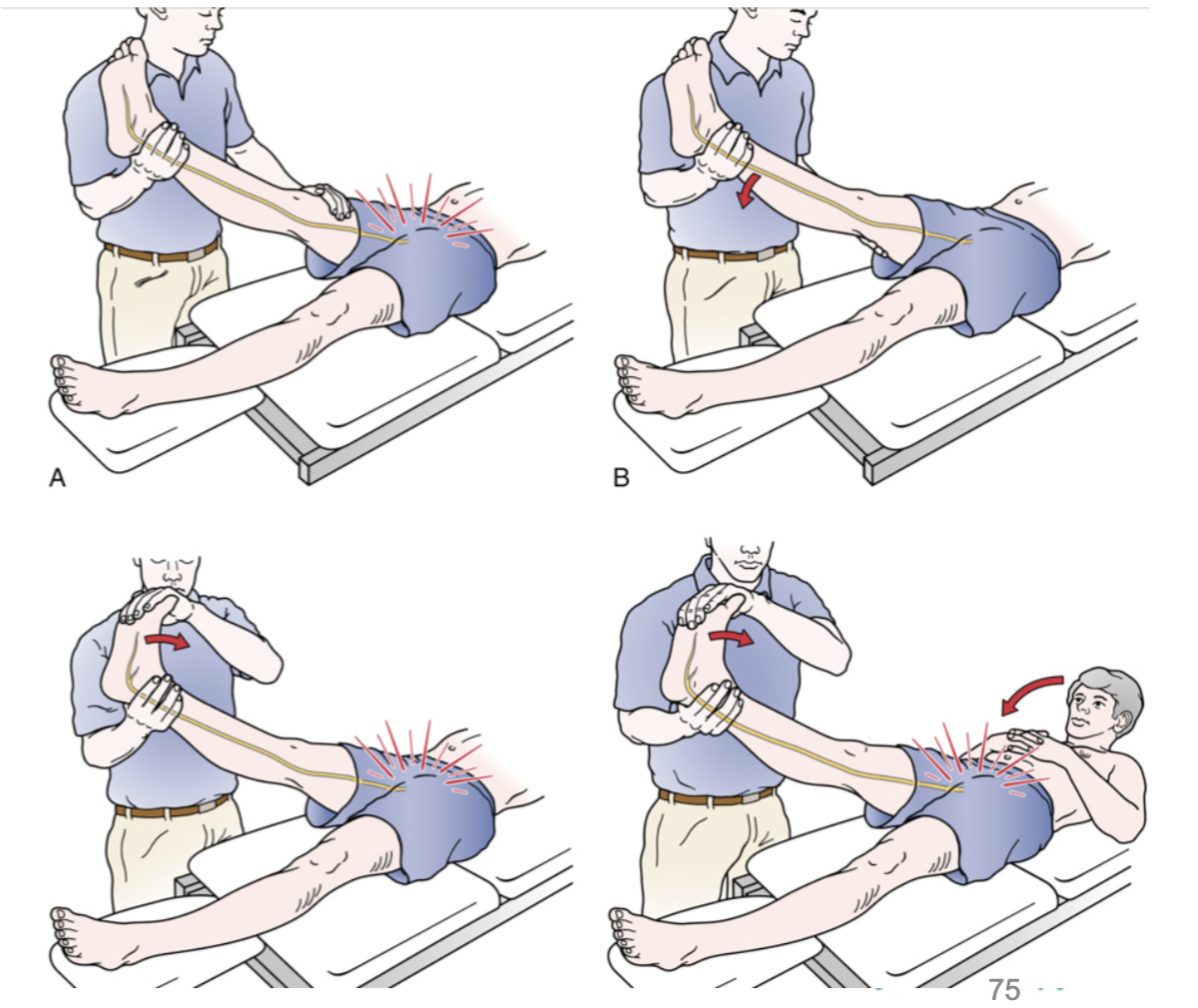
Describe how to perform the straight leg raise
1. Passively flex the hip while keeping the knee extended.
2. Observe for the point at which the patient reports:
• Back pain only → suggests more central disc herniation.
• Leg pain only → suggests more lateral nerve root involvement.
• Back and leg pain → suggests pressure affecting both central and lateral structures.
3. Once pain or tightness is felt, lower leg slightly until symptoms subside.
4. Apply neural sensitizing maneuver by dorsiflexing the ankle
5. If symptoms are reproduced or worsened by sensitizing maneuver, this indicates neural tissue involvement.
6. Each leg is tested individually, starting with the uninvolved (normal) side first.